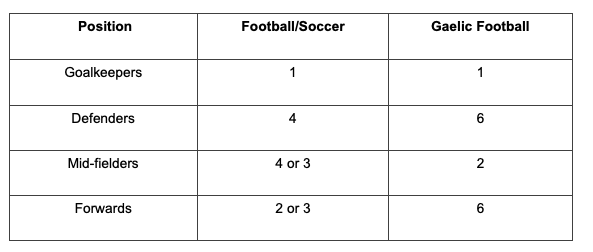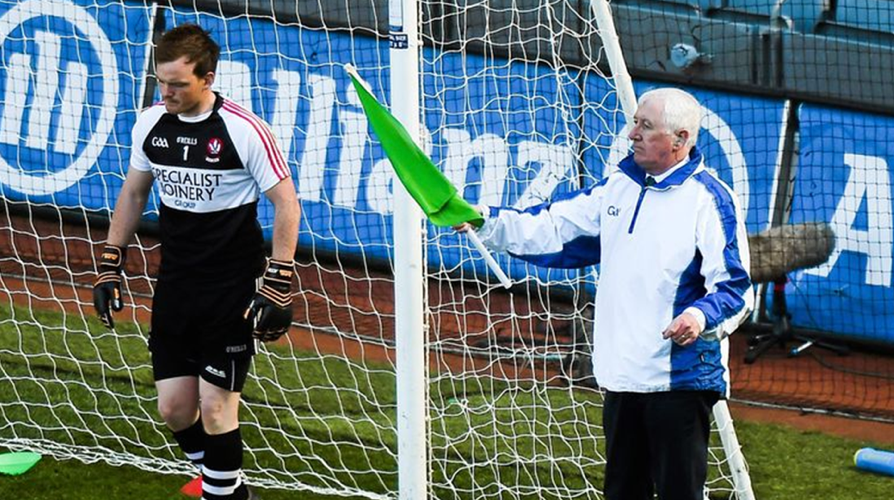Football, also known as soccer, does not need any introduction. It's considered to be the most popular sport in the world. Events such as the World Cup have the most number of viewers. Additionally, accessing a football pitch is pretty easy. In the modern day, we can compare it to accessing free slot machines on sites like https://online-casinosaustralia.com/instant-withdrawal-casino/.
Gaelic football, on the other hand, may be a relatively new term to you. However, it has been around since the 1600s.
Even though the two sports may look similar, they have several differences. The principles may be the same, but at the end of the day, the aspects of the game are different. In this article, we will look at the core difference between these two wonderful sports. We will consider several metrics, so buckle up!
Brief History
Modern Gaelic football was first played in 1670 in a county in Meath. This was an area where kicking and catching the ball was not prohibited. To say the sport has come a long way would be an understatement. Magistrates and police officers had prohibited it, citing the game as a cover-up for nationalist lobby meetings.
Withstanding various oppositions, the game finally came to life in the 19th century. The first official match was played in 1885. Historians and scholars recall at that time, it was only soccer and rugby being played. However, a third football sport was gaining popularity across the country. This was Gaelic Football.
On the other hand, the first football match can be traced thousands of years ago. When talking about the history of football, we need to differentiate the game as we know it and the sport that was played during ancient times. If you decide to go with the latter, you will travel back to the second or third centuries.
Rules of The Game
Different sets of rules govern both sports. In principle, some rules might be similar, but most differ.
Since Gaelic football combines rugby and soccer, a player can use both his feet and hands. In football, players can use all body parts apart from their hands.
Gaelic football can be tricky, though. You may carry the ball for only four steps. After that, kick or hand pass it with a striking motion or your fist. Opposite to this, in football, you are not limited to the steps you should take before passing the ball. The only part of your body you cannot use to pass the ball is your hands unless you are the goalie.
Being a team sport, fouls are unavoidable. In soccer, there are many possible fouls. We may even need a different article to discuss that.
Types of Fouls
In Gaelic Football, there are only three main types of fouls. Any of them may lead to:
- The ball is given to the other team;
- The player is cautioned;
- The player is kicked out of the field;
- The game is terminated.
Here are the different types of fouls in Gaelic Football
- Technical fouls - given when you have the ball;
- Aggressive fouls - physical or verbal fouls committed by a player against another player or the referee;
- Dissent - a player fails to comply with the officials' judgement or instructions.
The Number of Players Involved
Although both games are played on a rectangular field, the time played in each half, and the number of players differs.
In Gaelic Football, each team has a set of 15 players. Therefore, at any given time in the field, there will be 31 people, including the match official. If a player is deemed indisciplined or violent, the referee can kick him out of the field. In such a scenario, a team may have fewer players on the field.
In football, there are fewer players on the field. Each team is allowed a maximum of 11 players. However, in some cases, a team may have fewer players if the referee dismisses a player for indiscipline.
Football Formations
Obviously, with the different numbers of players, both sports use different formations. In recent years, football formations have become more fluid. So, teams may have varying formations.
This table compares the general formations of both sports.

How To Play
As indicated earlier, both sports have different sets of rules. So, they are played differently. Here are the major takeaways in this regard.
Starting the Game
You may have noticed in soccer that players of opposing teams will be in their halves before a game starts. Gaelic football starts differently. Players are positioned on either side of the half and pair themselves with the opposing team players.
For a match to begin in Gaelic Football, a jump ball is contested between the 4 midfielders. If the ball is on the ground, the player has to scoop it up to his hands using his foot. In soccer, there isn't any contest when starting a match.
Playing in Open Play
In Gaelic Football, you can only pass the ball by kicking or striking it. Throwing it to your team is considered a foul. Earlier, we discussed the four steps you can take when running with the ball. What should you do after completing your steps? Just bounce or pass the ball.
Soccer is more straightforward. Just pass the ball when you can. However, make sure you don’t use your hands unless you’re the goalkeeper. Even as a goalie, the use of hands is limited to your 18-yard box.
Scoring
In football, there is only one type of score; passing the ball through the opponent's goalpost. On the other hand, in Gaelic Football, you can score two ways. The ball may be hand-passed or kicked over the bar, which the chair umpire will signal with a white flag. This is considered a point. Alternatively, the ball may be passed or kicked under the crossbar into the net. Here the umpire will signal with a green flag. This is the actual goal and is worth 3 points.

Tackling
Tackling is a big part of Gaelic football. Compared to soccer, this action may be slightly more physical in Gaelic Football. The following types of tackles are allowed in Gaelic football but are not permitted in football:
- Jostling for the ball;
- Knocking the ball off your opponent with your hands.
Officiating
When it comes to officiating, there isn't a massive difference between the two sports. However, Gaelic Football has more officials than football because of the umpires who indicate which type of goal has been scored.
On that note, there is 1 match official, 2 linesmen, 4 umpires, and 1 sideline official. Football has fewer officials; 1 centre referee, 2 linesmen, and 1 sideline official.
Where to Play
Both sports are played on a rectangular field, but the main difference is the field size. A Gaelic football pitch is much bigger than a soccer pitch. Actually, it's estimated to be double the size of a standard pitch.
In Gaelic Football, several lines, at a distance of 13m, 20m, and 45m from each other, are marked across the field. In football, the pitch is marked differently. Apart from the outline, they have marked the 18-yard boxes, the centre line, and the centre circle.
Technology Used
Technology has become increasingly prominent in the world of sports. From social media's impact on sports to GPS tracking for performance measurement, it is evident that tech is crucial.
But different sports use different technologies to ensure that things run smoothly. One technology used in Gaelic football is the Hawk-Eye. It uses high-speed cameras at each end to locate the ball's position. Unlike football, this technology is not used for goals.
Last Kick
Clearly, both of these sports have their own unique feel. They have millions of followers all around the world. Nonetheless, they have differences, though minimal. If you understand one, learning the other might be easy. With all said and done, soccer is more prominent than Gaelic Football. The Gaelic Athletic Association (GAA) should do more to popularise the sport.




Recommended Comments
There are no comments to display.